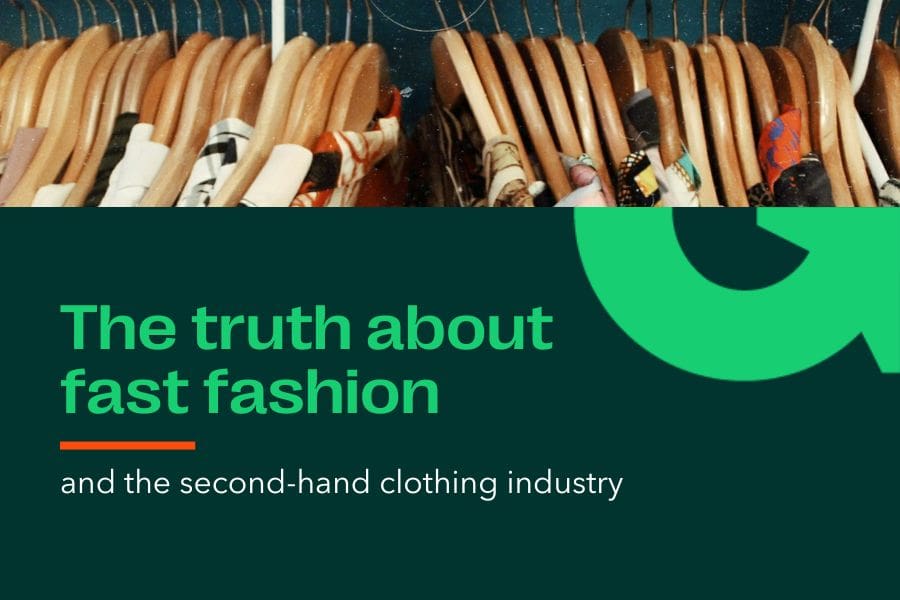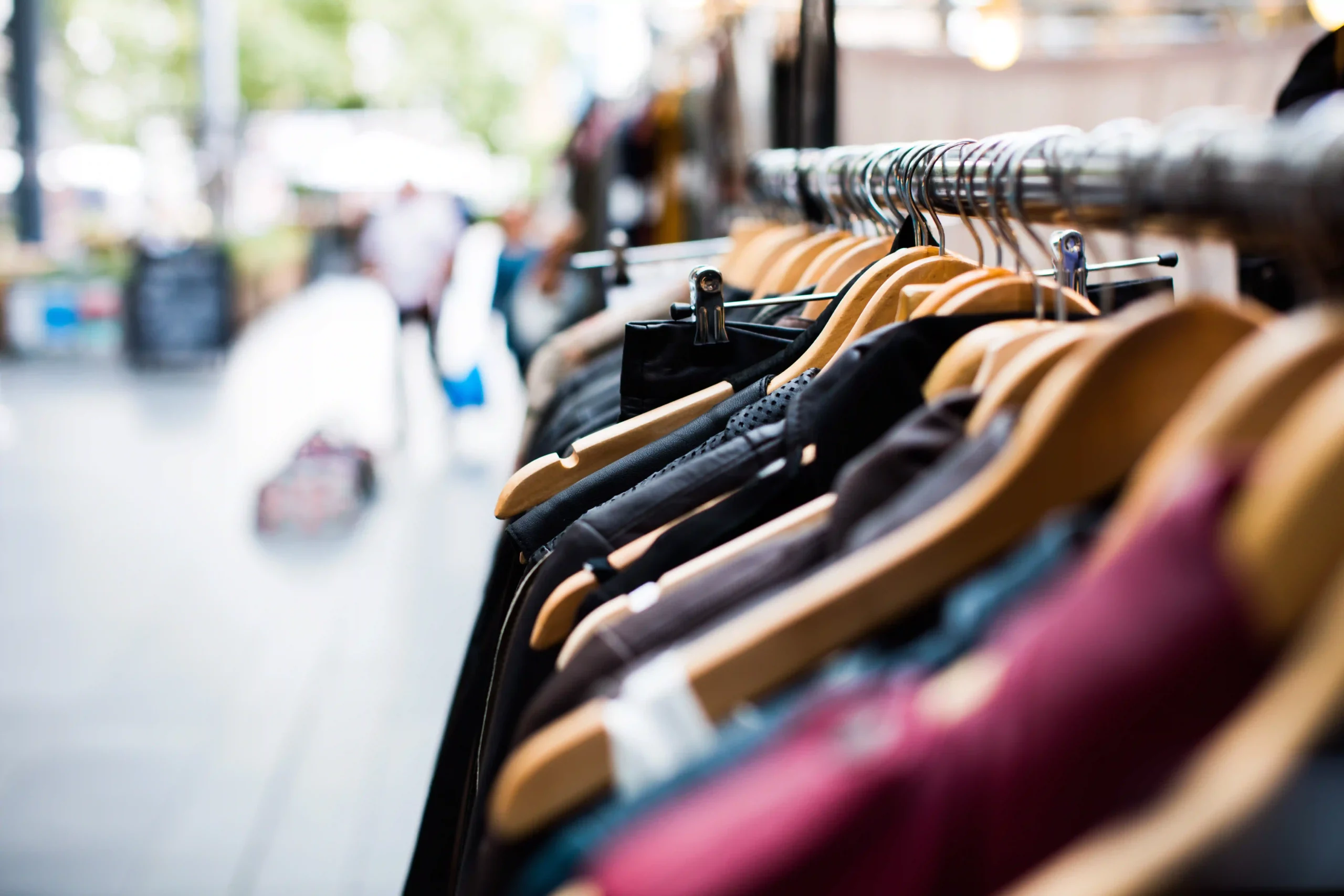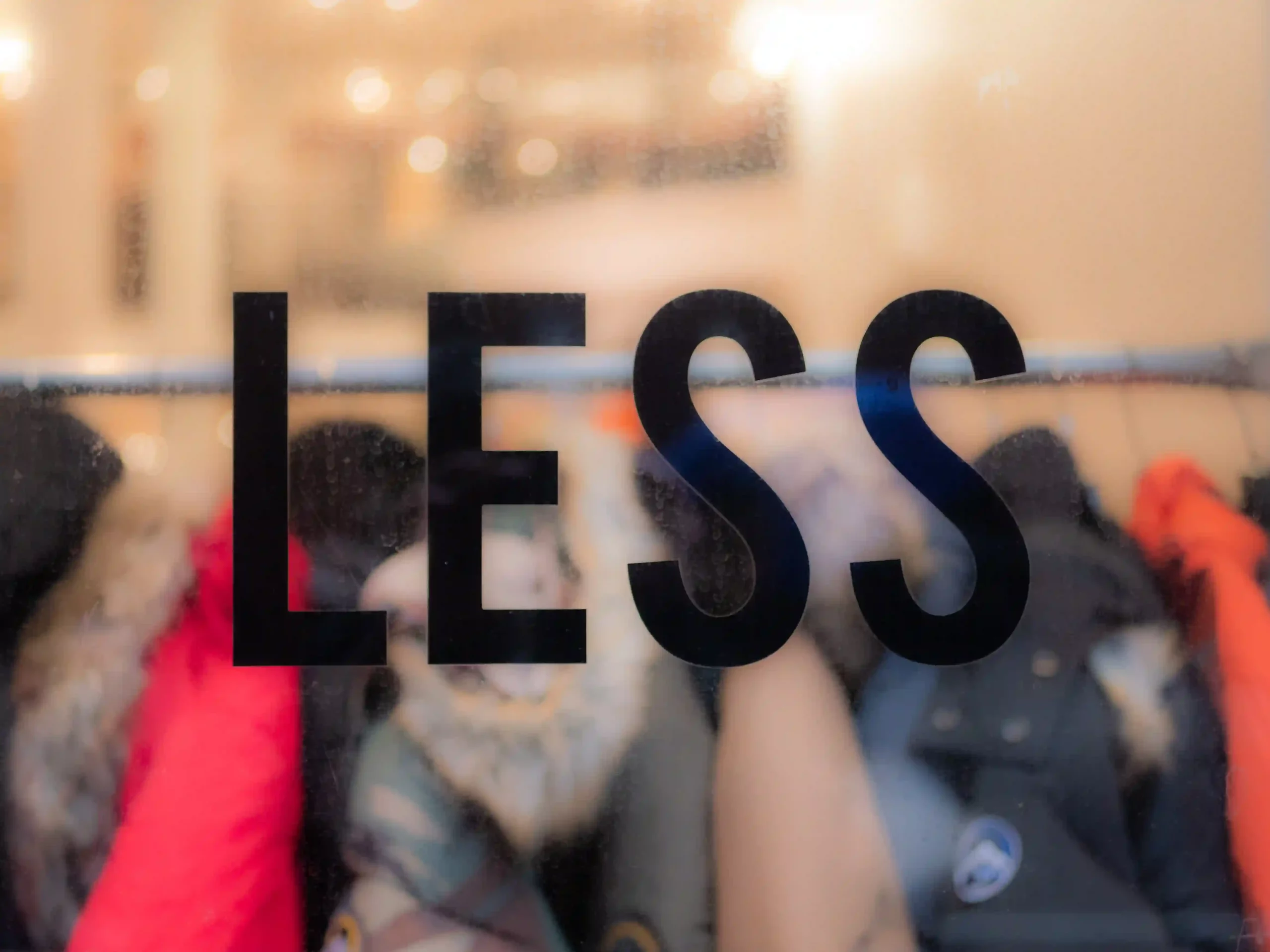The truth about fast fashion & second-hand clothing

Where does fast fashion end up once that split-second trend has passed?
While the ethics of fast fashion have been quietly questioned for decades, it was the collapse of the Rana Plaza clothing factory in Bangladesh in 2014 – and the deaths of 1,134 workers – that catapulted the subject into mainstream consumer consciousness in the Global North. Despite this (and the fact that there is now more sustainable fashion brands than ever), almost ten years later sales of fast fashion remain colossal, with a combination of jaw-droppingly low prices and a constant churn of ever-changing seasonal trends driving consumption like never before.
Fast fashion ticks all the boxes for an environmental nightmare. From being the third biggest industry emitter of carbon (more than international flights and maritime shipping combined), to being responsible for 20% of global wastewater, fast fashion has become a buzzword representing the rife overconsumption and material lifestyles of the Global North.
And scarily, demand is on the up. By 2030 global apparel consumption is projected to rise by 63%.
The destructive and unethical production methods involved in creating fast fashion have received a well-deserved spotlight over the last decade. However, less understood, is what happens to fast fashion at the end of its short life. After that TikTok fashion trend has passed, what happens next to the discarded clothes?
More than two tonnes of clothing is bought each minute in the UK. Vast quantities end up in landfill, while incinerators send eyewatering quantities up in smoke. But there is a third, deceptively virtuous waste outlet of unwanted clothing that is less understood: the second-hand clothing industry.
With the unofficial slogan of the modern green movement being ‘reduce, reuse and recycle’, one might assume that the second-hand clothing industry can only bring good news. However, thanks to the greedy and disruptive nature of the fast fashion industry, this once-green industry now hides more than meets the eye.
Is donating old clothing to charity shops good for the environment?
Before the era of fast fashion, the answer to this question would have been a simple ‘yes’. As well as raising vast sums for worthy causes, the 11,000 charity shops across the UK have been prolonging the life of garments for decades. According to Patagonia, extending a product’s life even by nine months reduces the carbon footprint by 30%.
But then came the explosion of fast fashion. In the past few decades, the fashion industry has seen a dramatic transformation. Globalisation made it possible to produce garments at progressively lower prices, and by ‘chasing the cheap needle around the planet’ (EAC), the Global North conjured the now-booming industry of fast fashion into being.
We are now at such a point that fast fashion clothing is almost considered ‘single-use’, with one in six young people questioned by the Hubbub Foundation admitting that they would not wear an outfit again if it had featured on their Instagram account.
The result of this overconsumption? A tidal wave of poor-quality fast fashion discards is hitting UK charity shops.

What happens to the clothes I donate to charity?
A small fraction (10-30%) of the higher quality garments are re-sold in the UK. However, the influx of used clothing is drastically out-weighing buyer demand. To cope with the influx and also raise further funds, charities sell most of the second-hand garments to private textile merchants, known as rag pickers, who export the clothes for sale abroad.
Most of these shipments are sent to Sub-Saharan Africa, and, after decades of these transactions, second-hand clothing has carved out a place for itself in local cultures. In Nigeria, the trade is named ‘okirika’, meaning ‘bend down boutique’ (due to the way customers sift through the piles of used clothes), or ‘kafa ulaya’, meaning ‘the clothes of dead white people’.
The effect of fast fashion discards in the Global South
The second-hand clothing is sold to individual market traders in huge bales, where traders are unable to inspect the contents until purchased. Once a viable route to financial independence for the market traders who re-sold the bales, poor quality fast fashion garments now mean that traders gamble with bankruptcy when buying their clothing bales, as increasingly huge portions of the bales are proving ‘unsellable’ when opened.
This directly feeds into an environmental scandal unfolding in Global South countries, which often do not have the infrastructure to deal with the flood of fashion waste. Ever-growing mountains of rejected textiles tumble out of landfill, clogging waterways and smothering local communities with unwanted cast-offs from the Global North. (Watch this short Greenpeace video to see what this shocking reality looks like). Worryingly, it appears that parallels can be drawn between the UK’s exportation of unsorted plastic and the unstandardised shipments of second-hand clothing overseas, in a familiar ‘out of sight, out of mind’ approach to appropriate waste disposal.
Fast fashion jumping on the green bandwagon…
Back in the Global North, fast fashion giants are taking advantage of the second-hand clothing industry as an excuse to sell even more products, for even higher profits. Large retailers have recognised that encouraging the disposal of old clothes creates space for new. In an ironic ‘close the loop’ campaign, H&M offered vouchers and discount codes in exchange for old clothing donations – which raises questions about how we change consumer behaviour without encouraging further consumption.

So, how can I shop more sustainably?
- Embrace ‘slow fashion’ by breaking free from the ‘wear once and toss’ mindset. Instead, invest the money you would have spent on multiple fast fashion items into one or two higher quality second-hand pieces of clothing that will last you longer, and likely fit you better.
- Invest in timeless staples: Relieve yourself of the pressure to keep up with seasonal trends. Instead, opt for durable, high-quality essentials that never go out of style. Mix and match these wardrobe superheroes to create endless outfits. Who needs a mountain of clothes when a few versatile pieces do the trick?
- Mend, don’t discard: Embrace your inner DIY expert and learn basic stitching. A small tear or loose button doesn’t mean it’s goodbye to your favourite shirt. Extend the life of your clothes by giving them some TLC. It might even enable you to sell items of clothing when you no longer wear them; research from Vestiaire Collective revealed that people take better care of their clothing if they know they can re-sell.
- Consider renting clothes: Need an outfit for a specific event or occasion, and know you’re unlikely to wear it again? Companies such as Hurr are changing the fashion landscape by offering high-end fashion brands at a fraction of the purchase price through rental platforms.
- Upcycle and repurpose: Get creative with old textiles by upcycling them into new items. Turn worn-out jeans into stylish shorts or transform old t-shirts into trendy tote bags. This not only prolongs their life but also reduces the demand for new resources.
- Host clothing swaps: Organize clothing swap events with friends or in your community. This way, you can refresh your wardrobe without spending money or contributing to textile waste.
Blame for the broken second-hand clothing industry should not fall on charity shops, who are merely trying to keep their head above the rising tide of fast fashion donations. Instead, onus should land with the fast fashion industry giants who are fuelling this system, and the private exporters who must enforce strict standardisation systems before exporting used clothing.
It is time for a global re-think. Not only of the fashion industry, but of the whole premise that our ‘throw-away’ society rests on. The UN has predicted that by 2050 the equivalent of ‘three planets’ will be needed if the predicted population aims for the same ‘glamour of mass consumption’ currently demonstrated by the Global North.
We have the power to change the status quo by embracing slow fashion and thinking carefully about what we hang in our wardrobes.
Did you enjoy this article? You can find more articles like this on our blog. Here’s a few more articles we would suggest to read next:


